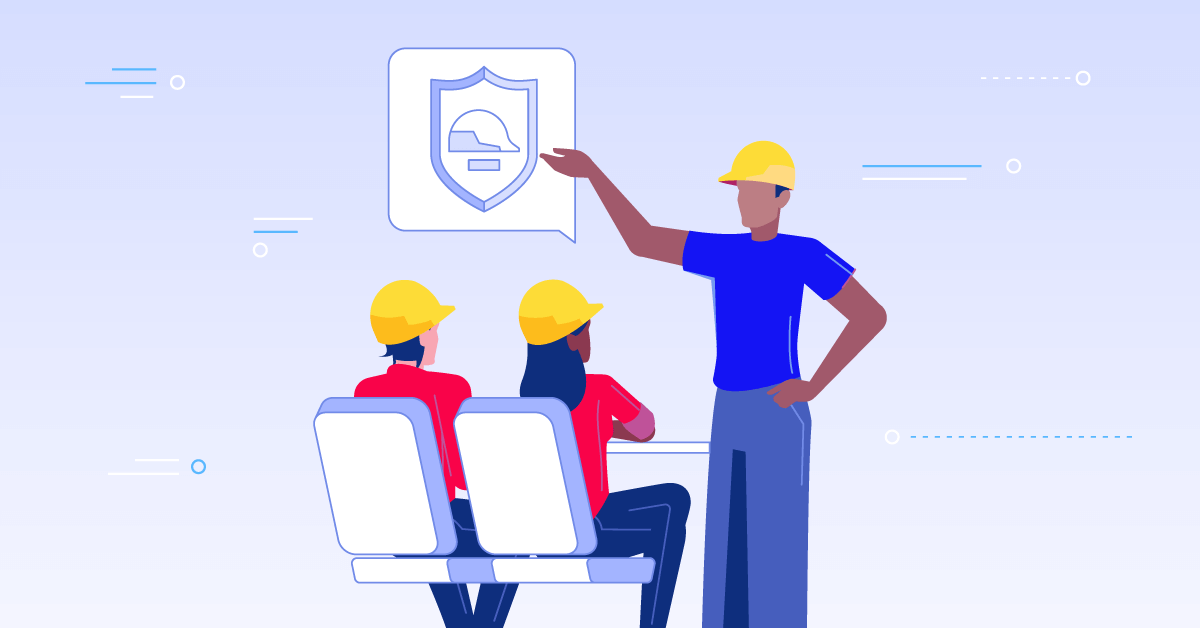However, it’s not necessarily easy to set up: each company is unique, and there is no one-size-fits-all training solution out there. You need to create a learning and development program that addresses the training challenges your organization and employees face. One that will help you remain at the top of the game and flexible enough to change as your company evolves.
The challenges of training and development in an organization are fairly similar wherever you go, especially when you are establishing your training program, and can be parsed down into a few key considerations. So, what are the most common challenges faced by training managers? How can they be overcome? Here are some ideas and suggestions for you to consider.
What training needs to be delivered – and to who?
The first of the most common issues in training and development is pretty obvious – what exactly should your program be comprised of? A big problem some Learning and Development managers face is a portfolio of courses that is too big, too unwieldy, out of date, repetitive or just plain useless.
A successful manager will avoid this by choosing and developing the courses that are most useful, not only for the organization as a whole but also for each individual learner. After all, the training needs of a senior manager are going to vary from a newly onboarded team employee. If you’re tackling a well-established learning and development platform, don’t be afraid to wield the axe to old courses.
Who does the training?
Another one of the challenges in training and development is the sometimes fraught issue of who exactly delivers the learning and development. Do you rely on internal knowledge and expertise, which has the advantages of being fully under the organization’s control and near its business niche? Or should you opt for external trainers, who will bring their own experience, skills and new concepts, but who can be a costly learning asset?
The key to this issue is tied up with our first question. It really does depend on the nature or your training requirements. There will be times that you will be much better off deploying an internal asset – for example when delivering induction training – but sometimes, bringing in external trainers is actually more cost effective. This is particularly the case when we consider the next of our problems associated with training and development.
Who develops the training materials and environment?
This is a vitally important consideration, whether you’re setting up your Learning and Development platform from scratch or you’re giving your established system a makeover. The temptation is to do all of this in-house, but unless you’ve got a fully-fledged Learning Development team that includes experts in eLearning and Course Design, it’ll be a false economy.
A good Learning Manager will want to establish links with a Learning Specialist, develop materials, and the learning platform in collaboration to create a unique solution to the training challenges the organization faces. You may find it useful at this point to have input from individual departments, as well as individual prospective trainees, as to what they feel they need to learn – and how.
Standardization of training
Being consistent and producing the same learning outcomes from the same learning materials is another of the challenges facing training and development, particularly in large corporate environments. If you rely on external trainers for some delivery, it’s hard to ensure that teaching styles and expertise are universally consistent. In this circumstance, this training challenge can be mitigated by developing a clear, unambiguous syllabus.
Considering that the majority of your Learning and Development will be online, consideration should be given to creating standardized training modules. For example, all modules could have identical time constraints, have highly-defined, clearly stated learning outcomes, or be delivered in a visually identical manner.
Global workforce, cultural differences
If you work in a multinational corporation, you’ll know that considering the breadth and diversity of the workforce can be one of the big challenges faced by training managers. How do you not only deliver your required training globally but also take into consideration language and cultural issues? Learning styles vary around the world, and what may make a successful training session in one country might fall flat in another.
Take into account your potential learning audience, and develop resources that are not only multilingual but also multicultural. Also, consider the method of delivery: You’ll find that some cultures benefit more from collaborative group training sessions, while others favor an individual approach.
Different generations in the same workplace
It’s inevitable that you’ll have people of different generations on staff, and this is another one of the training and development issues in the workplace. Much has been made of the millennial generation, and the fact that they are much more at home with online Learning and Development.
This is great for them and you, because they respond very well to learning techniques that deploy things such as microlearning and augmented reality. However, you still need to consider older employees. Just as different cultures have different learning styles, so do different generations.
While you could develop different delivery methods for your content to address this issue, another technique is to deploy your trainees as a learning asset. Millennials are great ambassadors for new ways of training, being able to communicate what they have learned (and how) to their teams with passion and clarity. They are fantastic at passing on your learning objectives, so consider them as part of your educational toolkit.
Millennials are great ambassadors for new ways of training.Share on
Engaging with training
Ensuring that your employees are fully engaged with your learning platform and content is yet another of the problems faced in training and development. This is mainly because the trainee either cannot understand the objectives or see the relevance of the training to him or her. Sometimes, it may be that the mode of delivery feels stale and uninteresting.
Two ways to tackle this issue present themselves: The first is to create a dynamic training portfolio that uses a variety of methods to deliver its learning objectives. So, as mentioned above, use techniques such as microlearning, or use different audiovisual elements in your eLearning provision.
However, a far more effective approach to ensuring engagement is to make the potential trainee a stakeholder in their own learning. Using surveys and appraisals, create appealing custom content that will make your employees feel that they have been involved in its development.
Getting feedback and course completion
Allied with the above, the exit process of course delivery is the last of the training challenges your talent development might face. Just as organizations have life cycles, so do training courses. Ensuring course completion is vital. Without it, how can you ensure that the learning objectives were achieved? With eLearning, it’s easy to monitor individual completion and achievement rates. Indeed, most eLearning platforms have monitoring and reporting tools to help you with this task.
With eLearning, it’s easy to monitor individual completion and achievement rates.Share on
It’s also important, however, to get feedback on the course, and, crucially, to be seen acting on what you’ve been told. This way, you are more likely to keep trainees engaged. In turn, they’ll feel more like stakeholders in their own development, and you get insights into what worked well and what wasn’t quite as good in your eLearning offering. From that, you can then feed this into your course development cycle, ensuring that your content remains up to date and relevant.
You may want to embed the feedback into the course ending, so that the employee, by providing a response, then achieves course completion. This way, you solve two challenges in learning and development in one go.
Overcoming training challenges
We’ve highlighted the main training challenges in organizations, but as you can see, they’re all easily surmountable. The keys are consistency, logic, and flexibility, as well as an ability to consider the Learning and Development process holistically – and to include your employees in the process. It may be said that the trainees themselves are one of the challenges faced by trainers, but don’t view them like that: In fact, they’re often the solution!


